That’s what we’ll find out here! Keep reading especially if you’ve taken an interest in making food with the finest ingredients—even in the comfort of your home kitchen!
Key Takeaways
- Gourmet food distinguishes itself through quality ingredients, culinary expertise, exquisite presentation, attention to detail, and unique flavors.
- Gourmet food is usually prepared and eaten for special occasions, but there’s nothing wrong with indulging in it for your personal enjoyment.
- There are certain characteristics of gourmet food, but it’s more of a concept than strict rules that must be followed.
- Gourmet food is not limited to fancy, expensive restaurants. Even home cooks can make gourmet food at home with attention and dedication to the recipe and to detail.
So… what’s gourmet?
First things first: What is the definition of gourmet? As a term, “gourmet,” according to Wikipedia, is a “cultural idea associated with the culinary arts of fine food and drink, or haute cuisine, which is characterized by refined, even elaborate preparations and presentations of aesthetically balanced meals of several contrasting, often quite rich courses. The ingredients used in the meal tended to be rare for the region.”
What a mouthful, huh? Well, think of it this way: it’s a refined appreciation of food and drink. It’s also often used to refer to high-quality, specialized tastes associated with the culinary arts.
Ever watched “The Menu”? That film gives an example of how a gourmet meal is prepared. It’s very artistic—just make sure to skip all the parts where people, uh, expired, yeah?
You can associate the term gourmet with opulent, extravagant, lavish, sumptuous food—pretty much all the superlatives you can think of! That’s why gourmet food is seen as something very expensive.
Gourmet can also be used to refer to a “foodie”—someone who sees food as an edible luxury. They appreciate the amount of preparation the food takes and enjoy the experience of eating it slowly to savor every bite.
Where did the word “gourmet” come from, anyway?
The word “gourmet” comes from French culture. So you can thank the French for that, as well as for the creation of baguettes and the opera cake.
Going back, according to More Than Gourmet, the original word was “gourmont”, meaning wine-taster or broker employed by wine sellers. The sellers needed the gourmont to have a refined palette to detect high-quality, delicious wines. Over time, it has evolved to not just mean these wine-tasters but also encapsulate the essence of fine food and drink and artistic presentation.
What makes gourmet food… well, gourmet?
Did all those grand words make you confused? Well, let’s get to the heart of the topic and be more specific. What makes something gourmet?
In no particular order, here are some of the defining characteristics of gourmet cooking:
High-Quality Ingredients
Gourmet food uses the best possible ingredients, whether locally or imported. Think of things like special cheeses, rare spices, or truffles. Each item is chosen for its top-notch taste and how it adds to the meal.
Some gourmet restaurants also use rare ingredients or ingredients that need special preparation, such as Morel mushrooms. These add to the exclusivity of the dining experience.
Artistic Presentation
Gourmet food is not just tasty but also looks amazing. The way it’s arranged and presented makes it look like a piece of art, catching your eye even before you take a bite. An example of this would be the way, say, Chef Miko Aspiras arranges and decorates his food creations.
Attention To Detail
Gourmet food preparation means you will pay close attention to every little detail, from how the dish is plated to the exact cooking time. Every step is carefully thought out to make the meal perfect. You’ll need to be very meticulous!
Unique Flavors And Pairings
Gourmet dishes stand out with their unique and surprising flavor combinations. These dishes blend sweet, savory, and unexpected tastes, making eating more than just a meal but a full sensory experience. Think of unusual food combinations that work, and you’ll have an idea of the taste you’ll encounter.
Do all these conditions have to be met for food to be considered gourmet?
To be honest, there are many more ways for a food to be considered gourmet. But think of gourmet more as a concept; it’s subjective.
For example, high-quality ingredients are usually used in gourmet dishes, but it could be that the concept of a chef is simplicity and freshness. That means they can use a freshly harvested vegetable from their backyard garden and then serve it as a simple salad but add an ingredient considered gourmet, such as truffle oil or caviar.
Another way it can be gourmet but not meet all the requirements is if you have a dish that is presented simply but has intricate flavors. Conversely, you can also present very beautifully prepared foods but have straightforward flavors.
In short, while gourmet food should have common characteristics, it’s more about the overall quality, effort, and intention behind the food.
Examples Of Gourmet Food
Gourmet cuisine is diverse, embracing both simplicity and grandeur and represents the best in culinary craftsmanship. Here are different examples of gourmet food—from different cuisines, too!
- Cheeses: Famous cheeses like Parmigiano-Reggiano, Roquefort, Brie de Meaux, and Manchego are loved for their special flavors and textures.
- Meats and Seafood: Think of super tasty meats like Wagyu beef and Iberico ham or seafood like Alaskan king crab. Truffles, too!
- Sushi: Omakase sushi is where the chef picks the best for the day. It’s a great example of the freshness and art of Japanese gourmet dining.
- Appetizers: These are the starters, like Delicate canapés, exotic-topped bruschettas, and caviar-laden blinis. They set the stage for a whole gourmet spread.
- Main Dishes: Think of meals like a juicy steak with a fancy sauce or special seafood dishes that bring about a symphony of flavors.
- Desserts: Sweet stuff at the end, like fancy pastries, special chocolates, or desserts with shiny, edible gold on them. The opera gateaux of Chef Ely Salar is a great example!
- Oils and Vinegars: Examples are the best olive oil from Italy or well-aged balsamic vinegar from Modena.
- Pasta and Rice: Handmade pasta with a yummy sauce or rice dishes topped with gold leaf.
- Breads: Imagine freshly baked bread like sourdough, layered croissants, or soft brioche—yum!
- Street Food with a Twist: Normal snacks made fancy, like lobster sandwiches, truffle fries, or tacos with foie gras.
- Drinks: As mentioned above, gourmet isn’t just about food. Think of wines from iconic vineyards, distinct single-origin coffees, or whiskies aged to perfection.
When is gourmet food appropriate?
The arts of fine food have the power to transform any dining experience into something that will be remembered, well, forever. Here are some suggestions when gourmet food is suitable.
- Special Occasions: Celebrations such as weddings, anniversaries, birthdays, and engagement parties are perfect occasions to have gourmet dishes. They add a touch of sophistication and luxury and make the event feel more special.
- Date Nights: Show your partner love and appreciation with gourmet cuisine. This makes the date even more unforgettable.
- Gift Giving or Souvenirs: Gourmet food baskets, artisanal chocolates, or a bottle of top-quality wine or champagne can make for thoughtful and luxurious gifts. As of this writing, it’s Ber months already in the Philippines—there’s time to think about it!
- Personal Milestones: Celebrating your wins, like a job promotion or completing a challenging project, with a gourmet meal can be a delightful way to reward yourself.
- Cultural and Food Festivals: Gourmet food stalls and pop-ups at festivals give attendees a chance to sample a wide range of delicacies from different cuisines. Check out upcoming food festivals. These can become food business opportunities.
Of course, enjoying gourmet cooked meals doesn’t always need a reason. “Just because” is a perfectly good reason!
Can home chefs make gourmet food?
Now, here’s the question: Do you need to be a gourmet chef to prepare a legitimate gourmet dish?
The answer is no. Remember, the essence of gourmet food lies in the quality of ingredients, attention to detail, and artistic presentation—all of which can be done in a home kitchen! You’ll just need to research, learn more, experiment, and keep practicing.
In short, with the right approach and dedication, any home chef can master the art of gourmet cuisine. You can bring the luxurious dining experience right to your own dining table. And you never know, you might be able to rival the food found in even the most upscale restaurants.
Make Gourmet In A Bottle At The Bailiwick Academy!
Want to try your hand in making some culinary art? Well, you can, with Chef Chona Laureta’s newest class at The Bailiwick Academy: Gourmet In A Bottle!
In this class, you’ll learn the following recipes:
- The rich Bangus with Tausi and Ginger
- The classy Bangus in Olive Oil
- The Filipino favorite Sinaing na Tulingan
- The creative Tuna Steaks in Black Beans
- The very very fragrant Spiced Tinapa in Coconut Oil
- The spicy Gourmet Tuyo with Capers and Sundried Tomatoes; and
- A bonus recipe of Spicy Burong Mangga guide in PDF!
And don’t worry if you’re new to the kitchen. Chef Chona will show you exactly how to mix flavors, get things right, and make your bottled products look as good as they taste! Very gourmet, agree?
So what are you waiting for? Sign up at The Bailiwick Academy and discover how to make homemade gourmet dishes which will impress friends and family—and can even be part of your business this coming holiday season as special gifts or giveaways!
Final Thoughts About Gourmet Food
Gourmet food is more than just fancy meals; it’s an art form, a celebration of ingredients, and a nod to culinary expertise. And the great thing is that you don’t need to be in a fancy place to enjoy it. Even at home, with the right touch, you can create gourmet dishes.
After all, the “Gourmet In A Bottle” class at The Bailiwick Academy shows that anyone can try gourmet cooking in their personal spaces, making gourmet food more accessible and less intimidating. It reminds us that gourmet food is not just for the elite but for anyone who has a passion for food!
Don’t hesitate—dive into the world of gourmet cooking! As you admire your culinary masterpiece and delight in its rich flavors, you’ll be grateful you took the leap.
—
Keep coming back to The Bailiwick Academy blog for more kitchen tips, tricks, and much more!
]]>What is mamon?
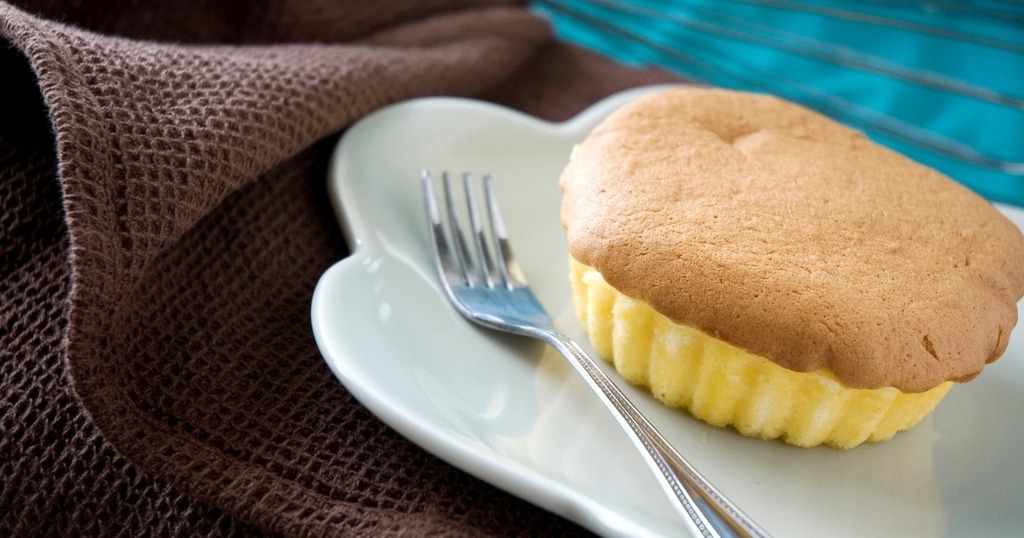
So for those of you who don’t know, it is a Filipino sponge cake. And no, it does not come from Mamon Island, Philippines. Yes, such an island exists. But we digress. Traditionally, it’s is baked in a mamon molder, which gives it its distinctive shape. And while there are variants like mamon tostado, which means “mamon toasted”, we’ll be focusing on the usual soft variant.
According to the Bangkok Post, the mamon origin was during World War II. There was little food, and the few commodities available to people were flour and liquid butter. Civilians back then would put the two ingredients together to create a not-so-delicious yellow,cake-like mass. From these roots, the mamon pastry was born. Now it’s not not-so-delicious; it’s super delicious!
Some disclaimers before the actual test
For the test, we’re just going to consider their appearance and taste. We won’t look at how many calories mamon has, its nutrition facts, or the mamon price. It’s generally pretty affordable anyway, and who wants to know how many calories it has? Let’s just eat it and be happy!
In terms of the brands we bought, these were just the ones available at the time of this writing. We also wanted to stick to immediately available ones and the ones that are in packaging already. For a more even playing field, we guess?
No one is paying us to do this test. This is strictly of our own accord. So if we’re going to be biased toward anything, it’s to which one tastes best, okay?
Finally, we’re not official taste test judges or anything. This was done purely to fulfill our cravings… and because it’s fun. You don’t have to take our word for it. Feel free to conduct your own taste test and share the results with us!
So without any further delay, here are the contenders!
Uncle George Mamon Rolls
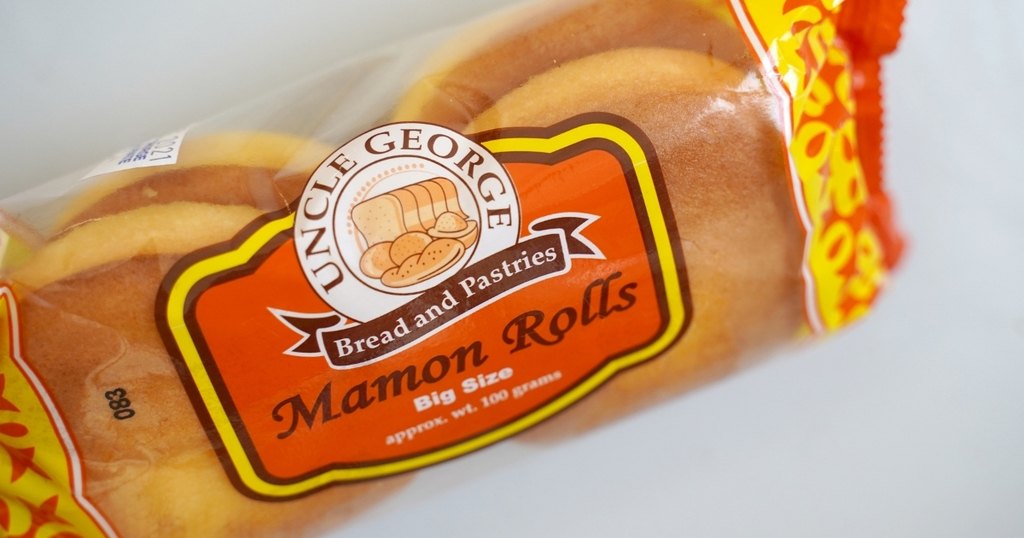
So Uncle George, the first entry on this list, brands itself as mamon rolls. It’s still mamon, so it’s on the list! The package comes with four pieces.
Visual Appeal:
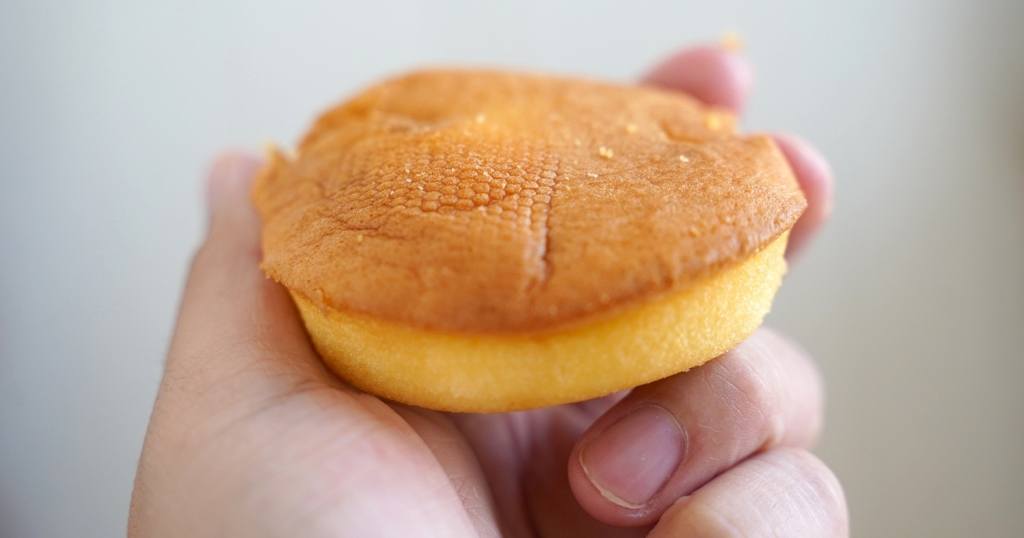
It’s generally smooth, without the ridges of a mold. The same for the top, except for that weird pattern. It reminds us of a kababayan bread, except it’s just flatter.
Taste:
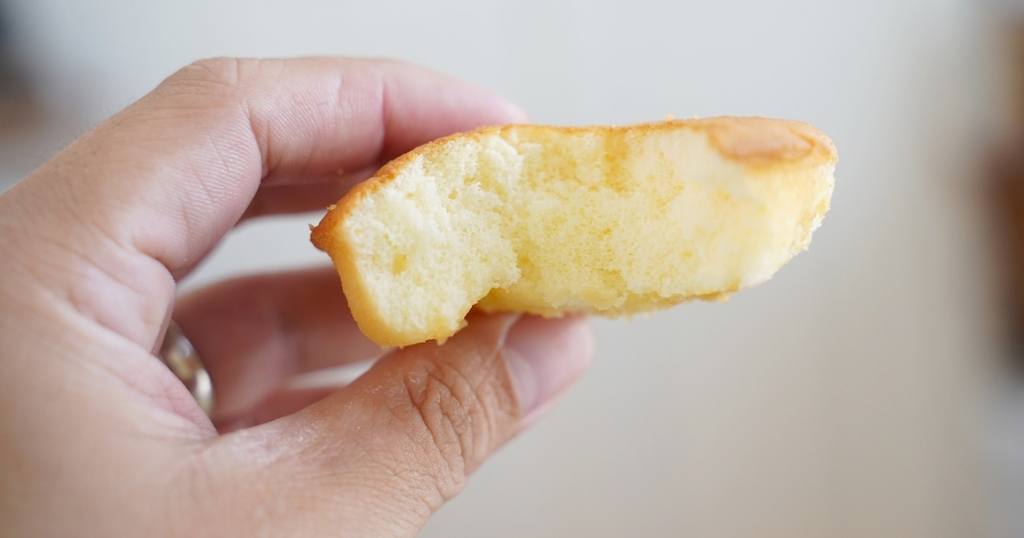
As you can see, it’s very tightly packed. You’ll get a lot of flavor in every bite. It has a nice delicious taste, a good balance of sweet and buttery. For some reason, we also just found it a bit soggy when we bit into it. It was still pretty good though.
Goldilocks Fluffy Mamon
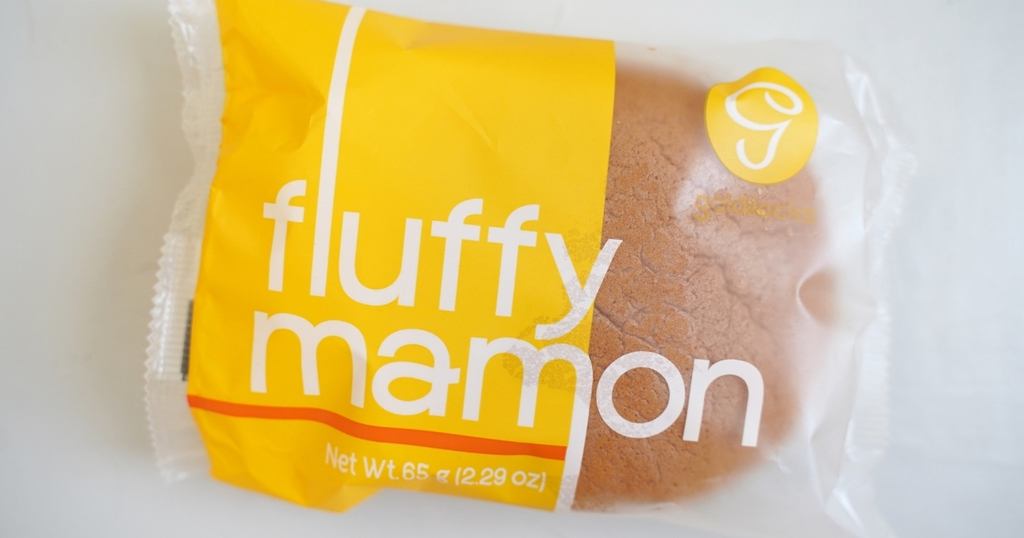
So right at the start, Goldilocks is programming us to expect something fluffy. We wonder if we will be disappointed…
Visual Appeal:
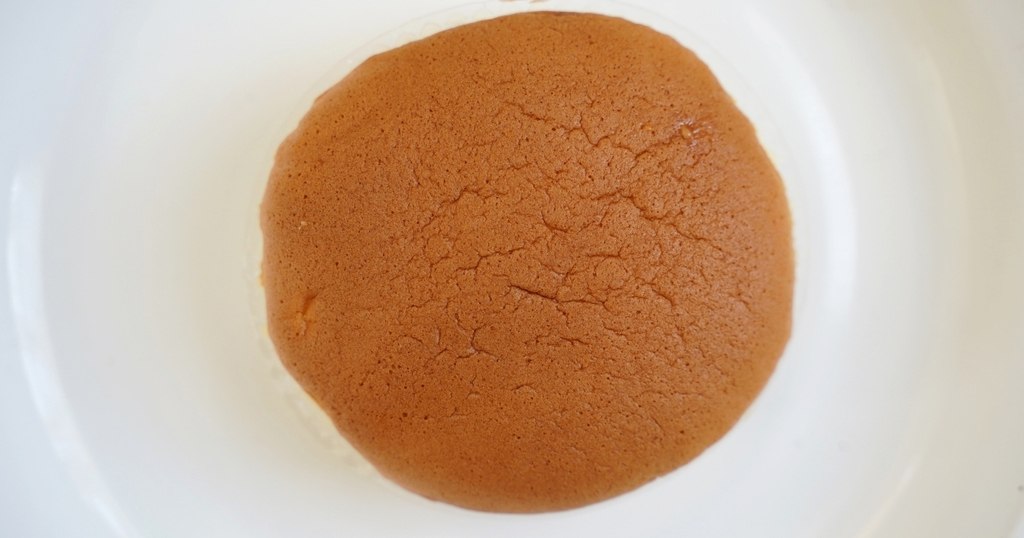
The view from the top isn’t bad. It’s not super appealing, but it’s also not enough to turn us off.
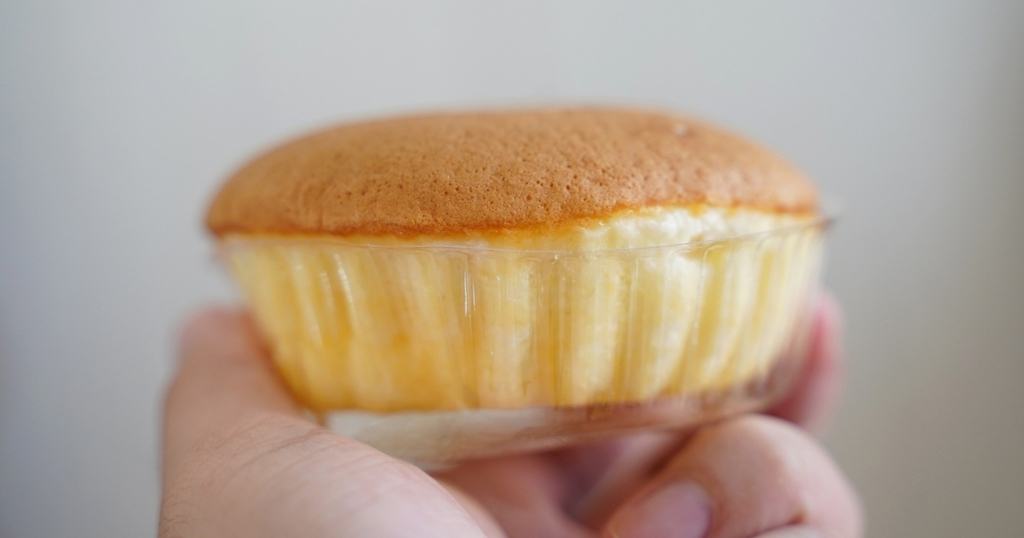
We like how they placed it in a plastic cup instead of a liner. That way there’s fewer possibilities for the mamon to stick. We also love the ridges!
Taste:
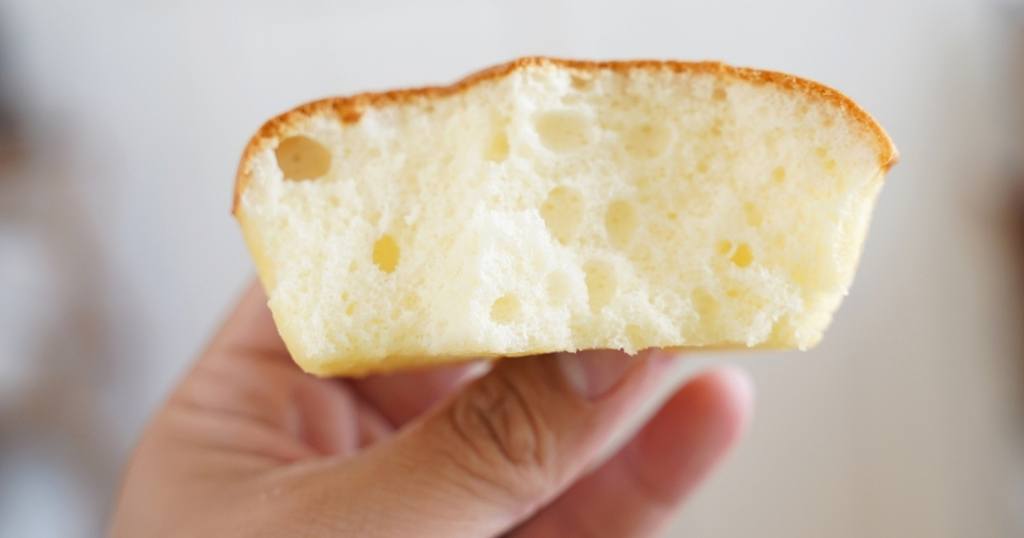
Well, we were looking for fluffy, and it was definitely fluffy! You’ll love the buttery taste. It’s also quite firm but soft when bitten into. And aren’t those airholes pretty? It’s a good balance of density and air.
Monde Special Mamon (Classic)
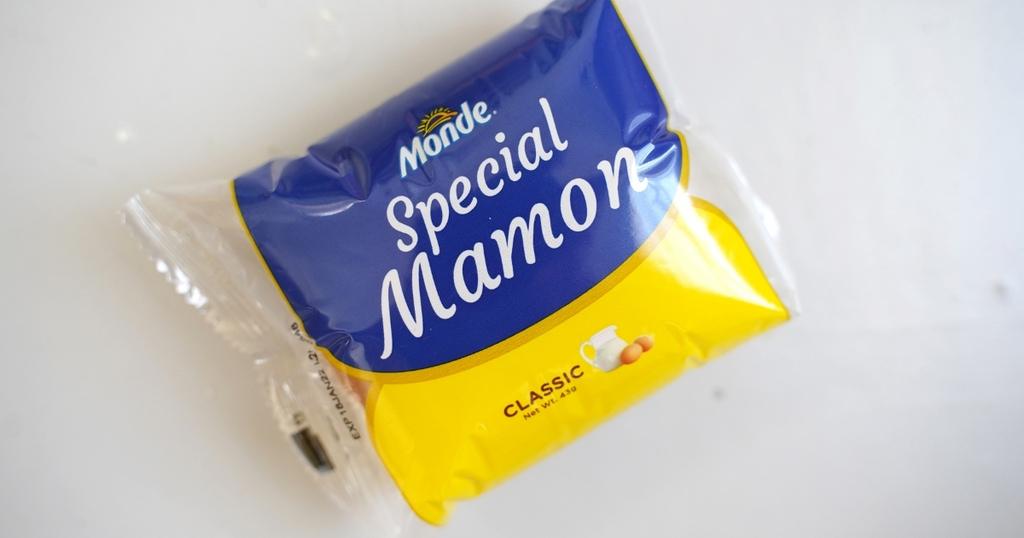
Monde mamons usually come in a pack of 6 pieces and 12 pieces. But if you go to a convenience store, there’s an option to buy just one piece. The packaging kind of hinds what it looks like, don’t you think so? But at least you know that when you get one, it’s a Monde. It’s also one of the bigger ones readily available.
Visual Appeal:
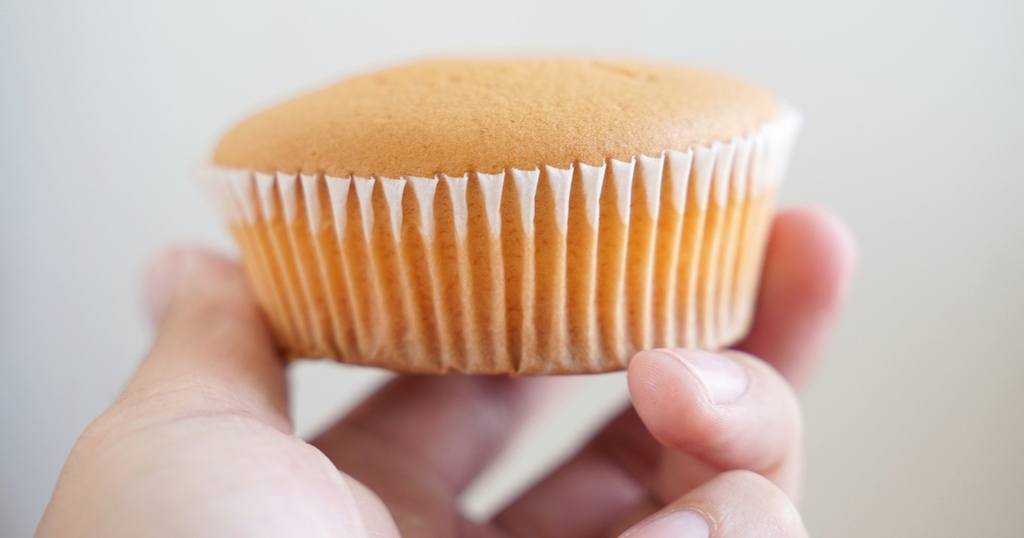
From the side, it looks very nice, plump, and tasty.
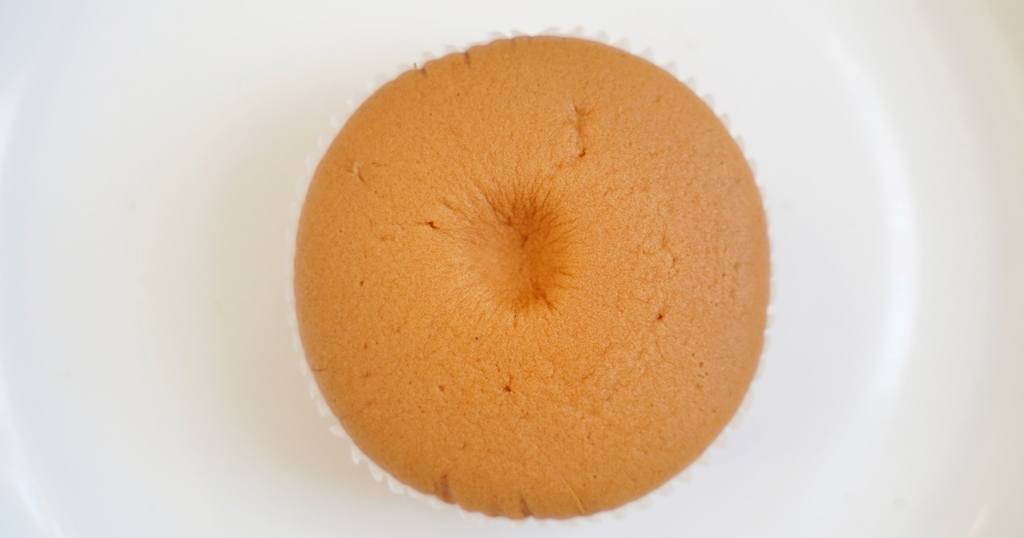
From the top is a different story. Maybe it’s best to just look at it from the side? LOL. Maybe if that part hadn’t collapsed, this would be a different conversation.
Taste:
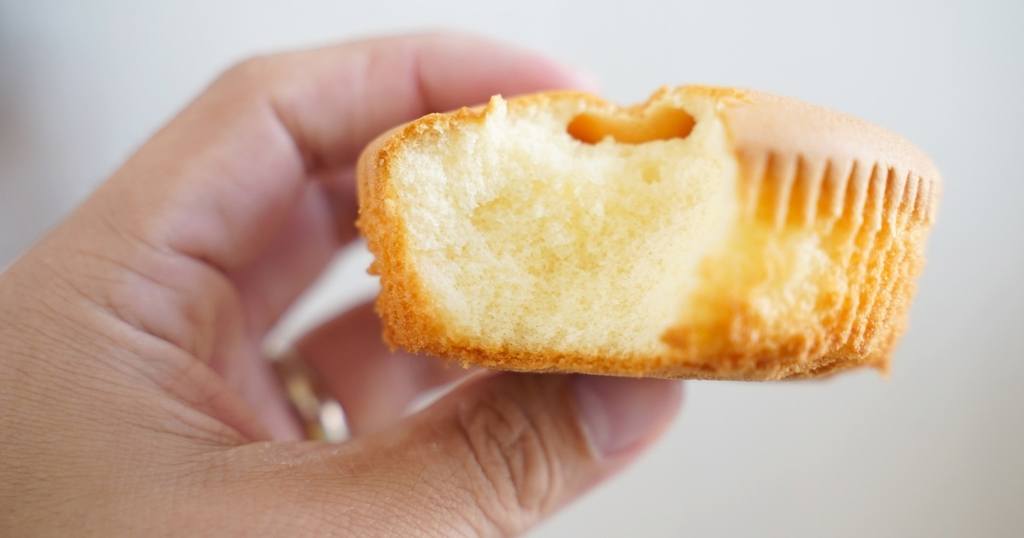
Just as additional to the appearance, when you peel off the paper, some of the pastry goes with it. And well, it ruins the visual appeal. But we do love the ridges! Anyway, so for the taste, it’s dense, has the right amount of sweetness, and… well, in our opinion, unremarkable. There’s no aftertaste, but there’s also no impact on your tongue when you bite into one. We guess that’s great if you’re just looking strictly for a mamon to eat.
Marby Mini Mamon
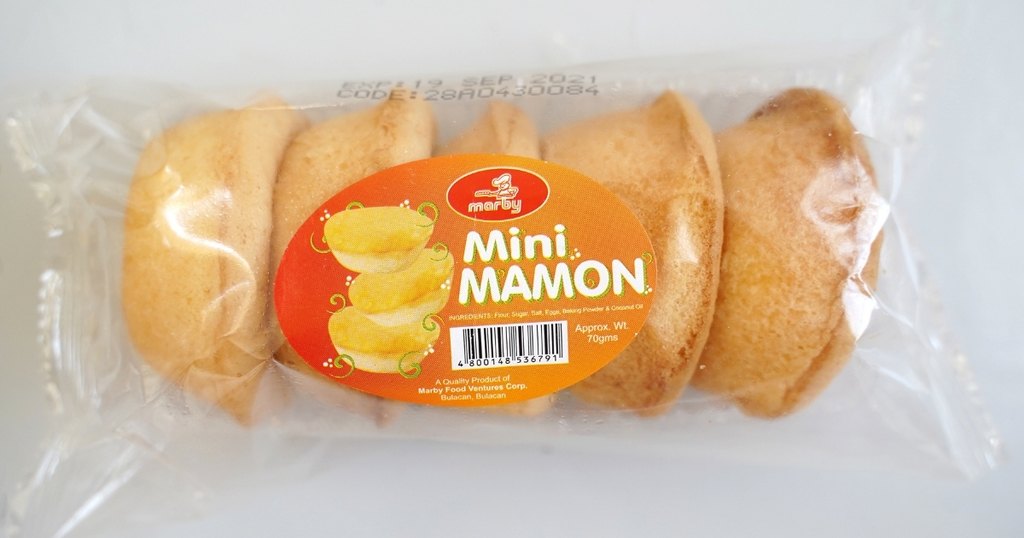
Here’s the other mini entry on our list. Aren’t they cute? What we like about Marby is that it comes in five pieces! If your craving is not satisfied by one, four more should do the trick!
Visual Appeal:
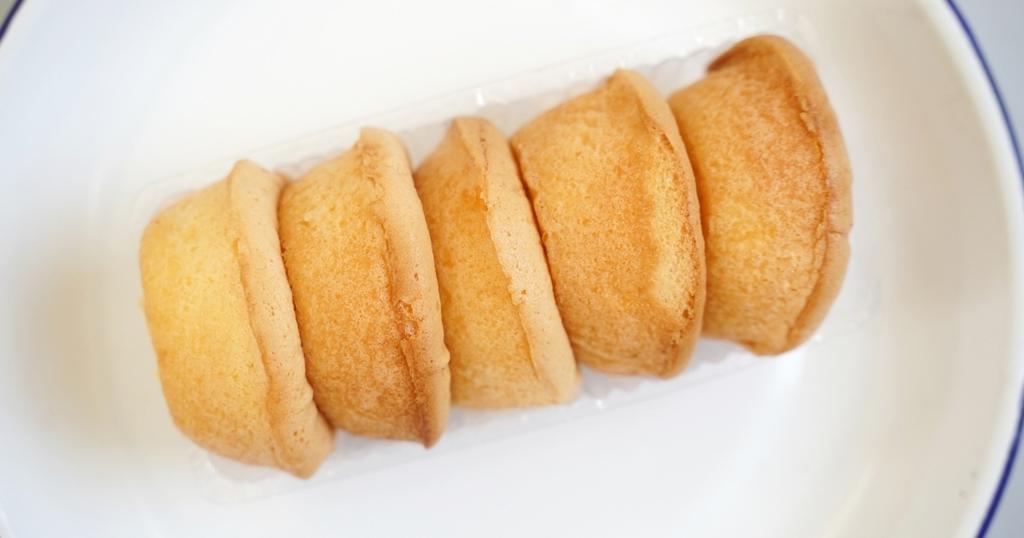
Well, like we mentioned, they’re cute. And they look soft and fluffy. We probably won’t be able to stop squishing them before eating.
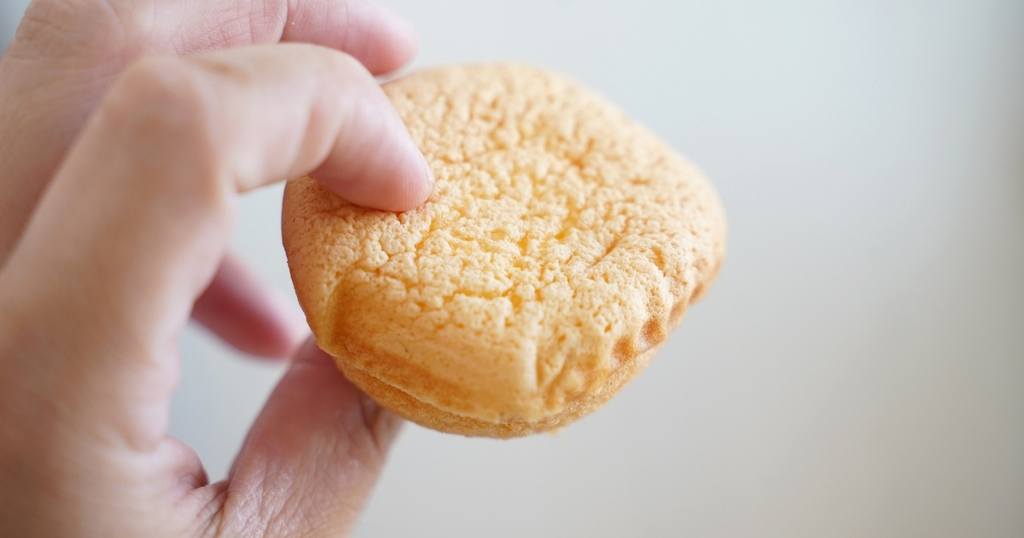
Of course, the top part leaves a lot to be desired. The top isn’t exactly appealing to our eyes… but that’s not going to stop us from tasting it!
Taste:
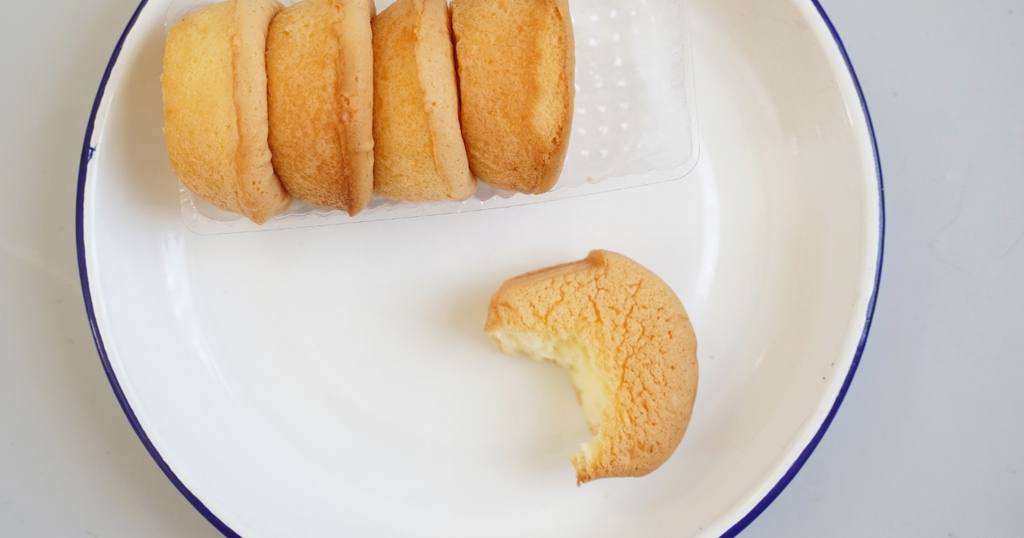
It has a nice moistness and as we suspected, very fluffy. We kind of found it too airy, though. I mean, we like fluffy, but not to the point where it’s more air than bread. But hey, at least it has five pieces. The taste is also okay, just the right amount of sweetness.
Tiffany’s Two Pack Mamon
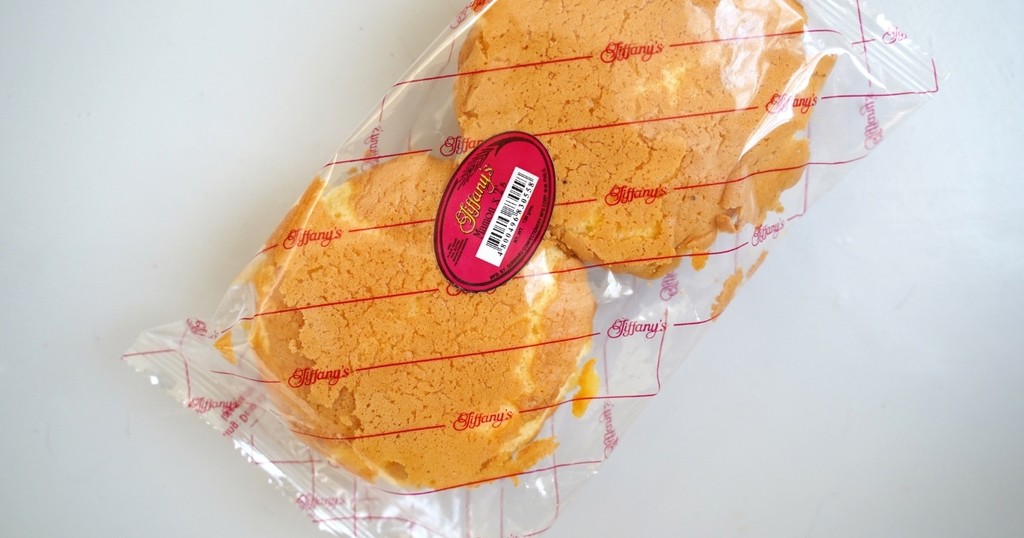
So what’s nice about Tiffany’s offering is that you’ll get two in one pack. But will the taste be more than enough to satisfy us?
Visual Appeal:
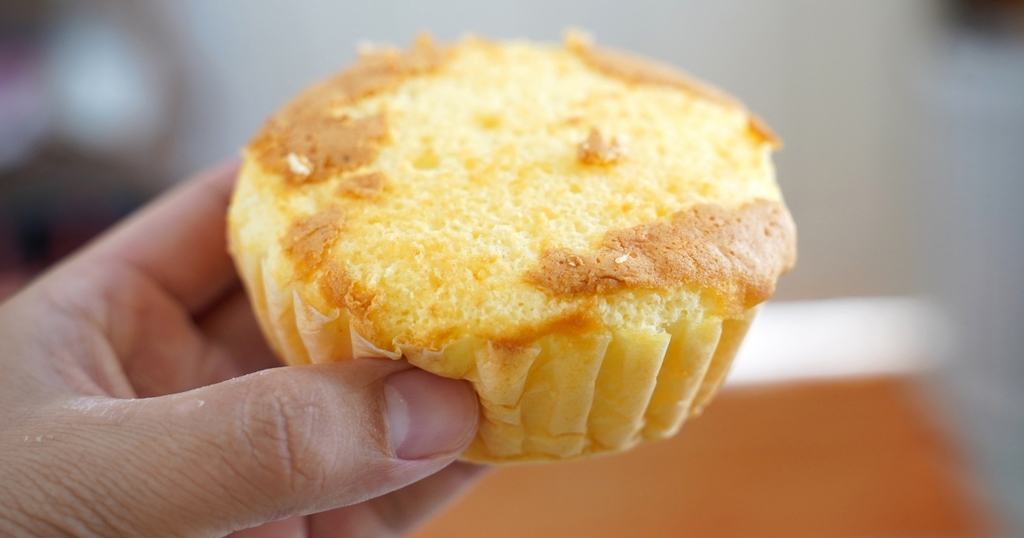
Sadly, the top part was already stuck to the plastic even before we got one from the packaging. The brown layer was all gone. That made us sad. But oh well, there’s more than enough for us to sink our teeth into.
Taste:
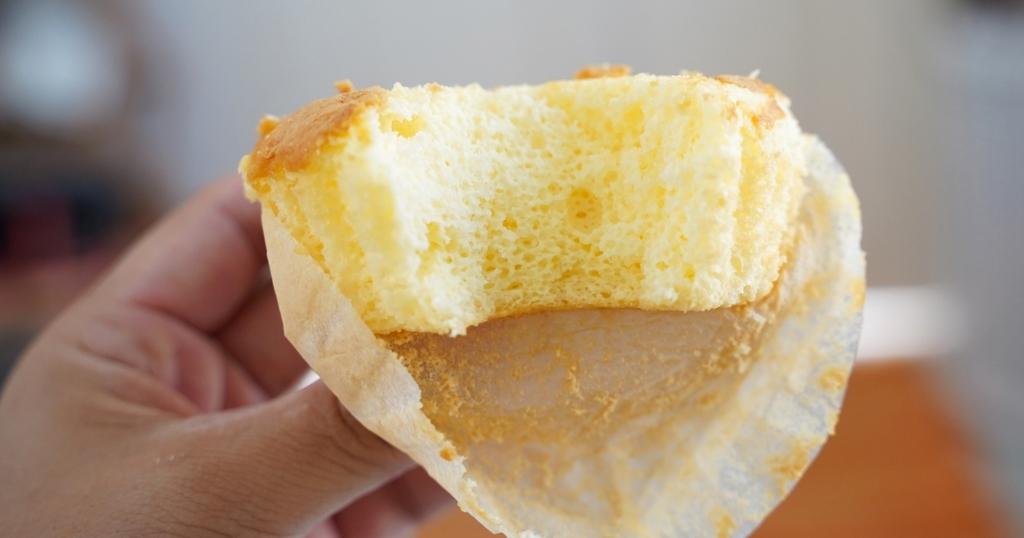
The taste was sweet and buttery, but we found that there was a weird aftertaste. Sort of a chemical-like taste? Also, we found this brand to be a bit too dense for our taste. It’s filling, but with the mentioned taste plus the density, this probably won’t be our first choice.
And the winner is…
If you guessed that the winning mamon = Goldilocks, then you’re right! Among the five choices, Goldilocks emerged as the fluffiest, prettiest, and most delicious. It was the one that had just the right amount of sweetness and it wasn’t too dense. No wonder searches for “mamon goldilocks recipe” are high, or that recipes for mamon like Goldilocks are in demand. A close second for us would be the Marby and the Uncle George brands.
Want to make your own instead?
This test was fun, but would you like to not have to look for a nearby place to buy mamon? Want to just make your own mamon versions? After all, just having five options may not be enough to satisfy you. Then why not enroll in our Gourmet Mamon class? Check out the video below for a preview.
Chef Chona will be your instructor for this class. We’ve featured some of her classes previously in this blog, such as her Kakanin and Silvanas classes. With this class, she’ll teach you how to make assorted ones! There will no longer be any need to Google “butter mamon near me” or “filipino mamon near me.” You’ll just make your own!
In this class, you’ll be able to produce nine different mamon flavors using Chef Chona’s mamon recipes. These include mamon chocolate, mamon ube macapuno, mango, and dulce de leche. You’ll also learn the mamon ingredients, the mamon molder size to use, why mamon shrinks, and mamon shelf life. Find out where to buy tools to make mamon, like the mamon molder, liner, etc.
And as a bonus, Chef Chona will also share with you her techniques on how to achieve proper whipped cream. You’ll even learn how to flavor Italian Merinue Buttercream to further elevate the simple mamon bread. And finally, she’ll give you business advice to make sure your food business is profitable!
So what are you waiting for? Visit The Bailiwick Academy to enroll in this class today!
]]>